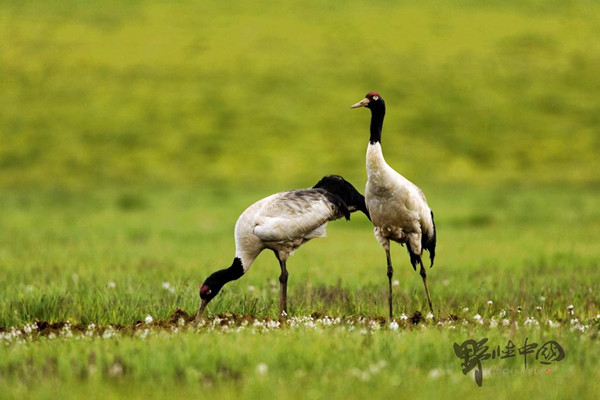Habitat is key
- By Liu Haile
 0 Comment(s)
0 Comment(s) Print
Print E-mail China Pictorial, September 4, 2013
E-mail China Pictorial, September 4, 2013
The World Wide Fund for Nature (WWF) launched its China operation with a project for giant pandas. In 1980, upon an invitation from WWF, American scientist George Schaller set off on a giant panda research trek in Wolong Nature Reserve in southwestern China's Sichuan Province. Three decades later, in addition to its impressive wildlife protection endeavors, WWF China has stepped foot into fields such as ecological sustainability, climate change, and energy. Still, species programme remains the engine of WWF's efforts in China. In August, Fan Zhiyong, director of WWF China's species programme, sat down with China Pictorial (CP) at the WWF Beijing Office to share his understanding of wildlife conservation, to which he has devoted more than 20 years of his life.
 |
|
Black necked Crane (Grus nigricollis), Zoige, Sichuan,June 2007. [Photo/Xi Zhinong/WildChinaFilm] |
CP: What do you think of the wildlife conservation situation in China?
Fan: China's efforts in wildlife conservation began in the 1950s. In 1956, Dinghu Mountain Nature Reserve, the first of its kind in China, was founded. However, large-scale construction of nature reserves didn't start until the 1980s. As China opened its door to the outside world, global nature conservation organizations such as WWF began to enter the country, bringing new ideas and concepts about wildlife protection. Chinese people began to rethink behavior harmful to the ecosystem and restore nature reserves that were previously destroyed. Over the following three decades, China converted 15 percent of its total territory into nature reserves – an eye-popping achievement that no other country has ever made in such a limited period.
|
Stories not to miss: |
|
• Wild China |
In 1989, the Law of the People's Republic of China on the Protection of Wildlife was enacted. Gradually, a wildlife conservation network ranging from the central government to township-level governments was formed. Benefiting from the network, some species have been rescued from the brink of extinction. For instance, crested ibises were once deemed extinct in the wild until seven were discovered in Yangxian County, Shaanxi Province, in 1981. The state established a protection station for the species in the county, and its personnel guarded trees in which the birds were nesting around-the-clock to prevent attacks by animals such as yellow-throated martens and yellow-bellied weasels. To date, the population of crested ibises has reached close to 1,000.
Despite the fact that situation has improved for some species, the overall conservation situation remains disheartening. For some species, our efforts have only slowed their decline to extinction, rather than bringing their numbers back up.






Go to Forum >>0 Comment(s)